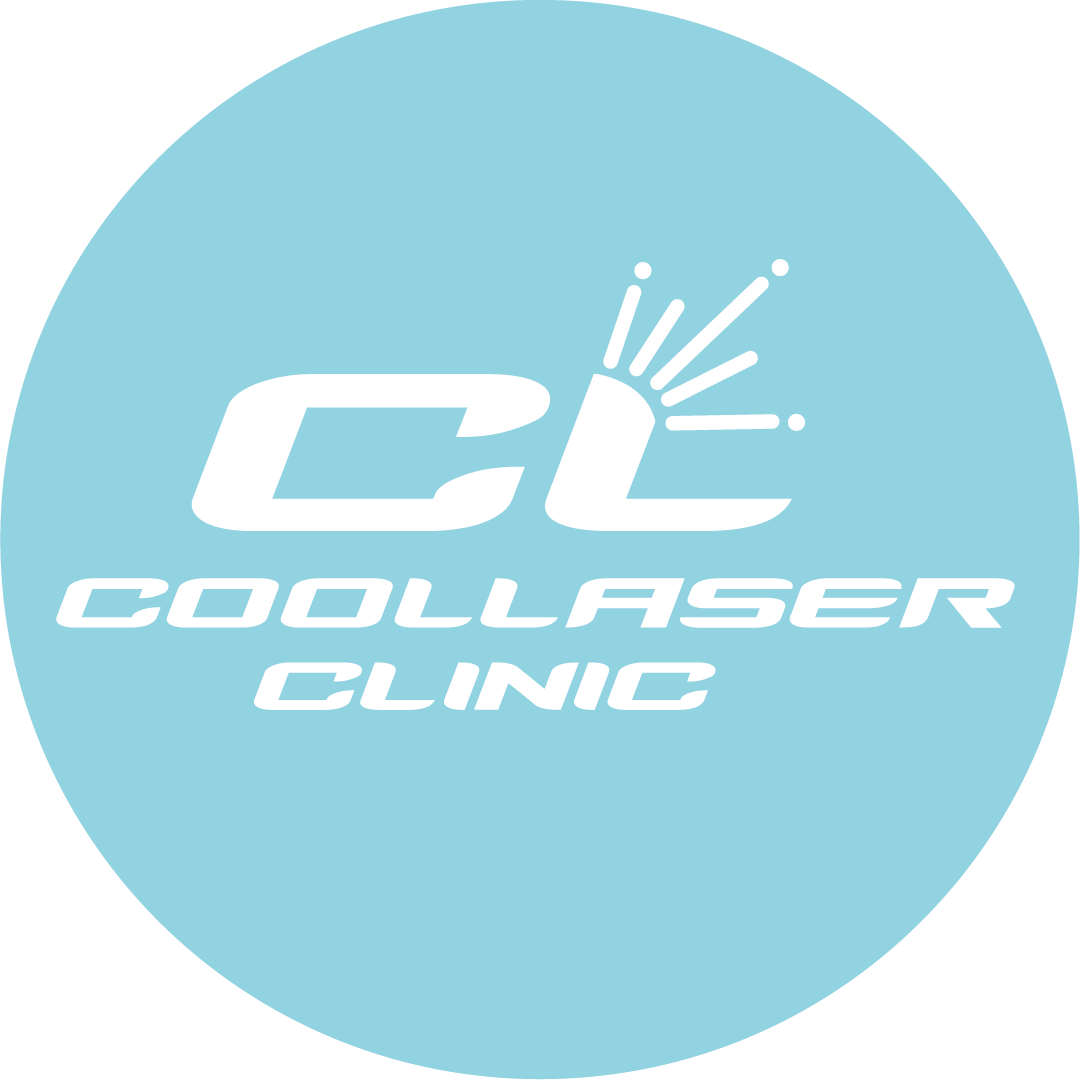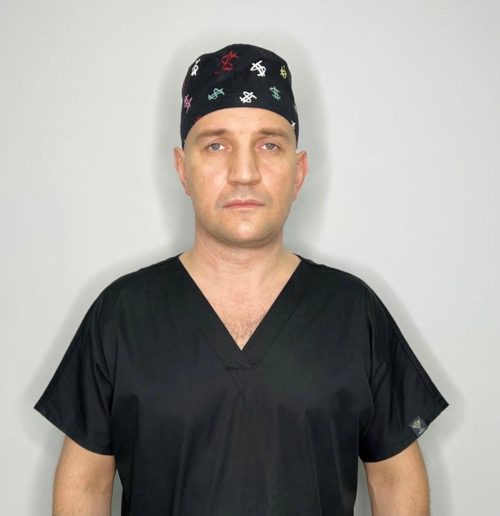Artificial organs grown using cellular material – Top 6 shocking cellular medicine news stories
Stem cells: an eye in a cup and an ear in a hand and many other surprising discoveries. Today, stem cells are being thought about not only by patients, but also by doctors who are far from innovative developments.
With each passing year, cellular medicine is gaining momentum. More and more previously incurable diseases are being treated with stem cells.
So what is it really – stem cells? How does cell therapy treat the body? Experts with many years of experience in cellular medicine at Coolaser Clinic will help us answer these questions today.
Cellular material: what is it?
All cells in our body have a clear purpose and function. Some cells carry oxygen and haemoglobin, others are responsible for immunity, others determine our skin colour.
Initially, all cells are undifferentiated, i.e., they are not highly specialised. Stem cells are undifferentiated and can become absolutely any cell in the body.
History of the discovery of cell therapy
The term “stem cell” was first used by Alexander Maximov, an American histologist with Russian-American roots, in 1909 in Berlin.
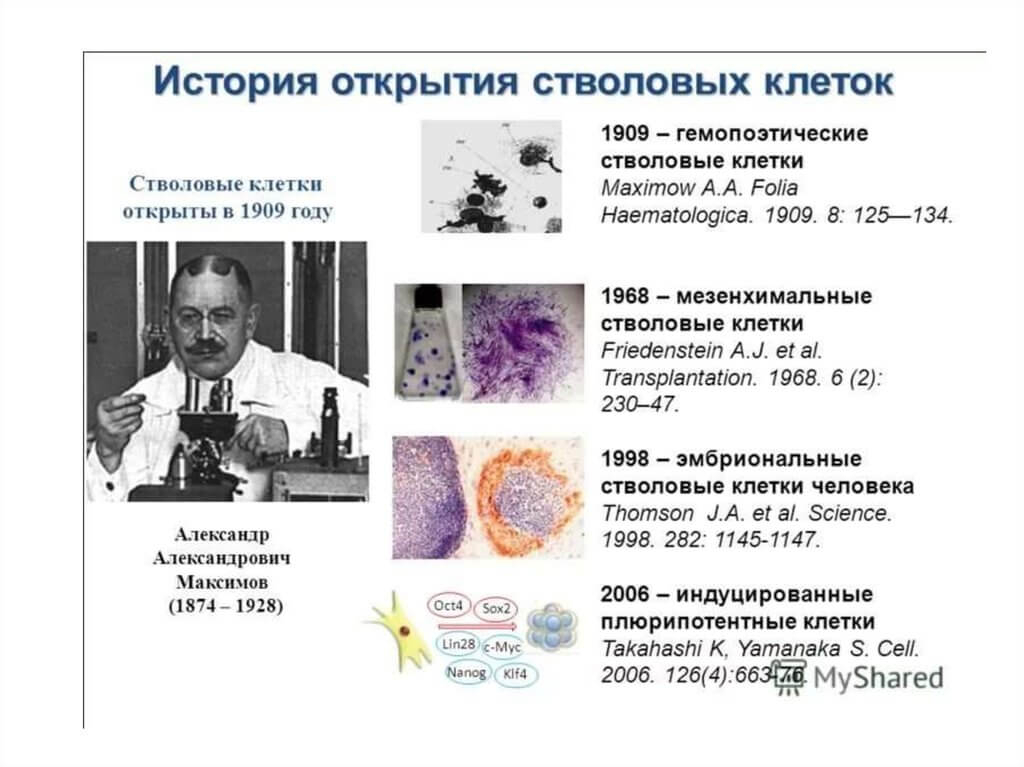
Maximov has done a lot of research in the field of haematology, including on the blood of chickens and has identified many special functions of stem cells:
- the ability to renew itself;
- division by mitosis;
- self-differentiation into any other cell.
Over the next 60 years, research in cellular medicine led to experimental uses or injections of stem cells. It is known that “youth injections” were extremely popular with members of the CPSU Central Committee.

Already in 1978, haematopoietic (stem) cells were identified in umbilical cord blood. And in 1981, samples of embryonic cells (from the mouse organism) were obtained.
For the next 20 years, scientists from different parts of the world would extract cellular material in vitro and learn how to cultivate them. And already in 1999, embryonic stem cells were officially recognised.
How has the history of cellular medicine evolved in the 21st century?”
Already in 2005, the list of diseases that are amenable to partial or complete stem cell treatment totalled several dozen. Among them:
- benign neoplasms
- certain forms of leukaemia
- certain blood diseases
- Stem cell transplantation has shown great efficacy in the treatment of cardiovascular disease
- treatment of multiple sclerosis
- sure steps towardsa cure for Parkinson’s disease
- high efficacy in the treatment of Alzheimer’s disease
- arthroses and arthritis of the joints.
- skin pathologies (eczema, psoriasis and others)
- treatment of optic atrophy
- rehabilitationparalysed patients
- stroke rehabilitation
Almost every year marks a new era in cellular medicine. Each discovery, each new round of development gives patients not only hope, but also a real chance for recovery.
Popularity of cell therapy
Since the dawn of social media and the internet in general, the phrase “stem cells” has become a cause for concern for many patients. Many clinics around the world are already offering regenerative therapies, although clinical trials are still ongoing.
For several years now, despite the scepticism of critics and ordinary patients, cellular medicine has been working real miracles.
TOP 6 shocking cellular medicine news
An ear grown on the hand 2016
You heard right. In 2016, scientists in China managed to grow a real ear in a patient’s body. More precisely, the auditory organ was grown on the patient’s arm.

Dr Guo Shuzhong at Zhao Tong University Hospital performed a unique operation. In the first stage, specialists expanded the tissue in the arm and transplanted cartilage there. The cartilage was taken from the patient’s rib. The cartilage was then shaped into the desired ear shape and covered with skin. Cellular medicine was employed to build up the necessary masses. As a result, a patient who had lost his hearing organ in a car accident was restored to almost his former life.
Mouse lung in a flask
Columbia Medical University boasts of growing a real lung from stem cell material. Not only have they succeeded in copying a mouse respiratory organ from stem cells.

The most amazing thing is that scientists were able to grow “in vitro” a completely functional lung with its own circulatory system. This discovery requires significant refinements so that it can be used with human material.
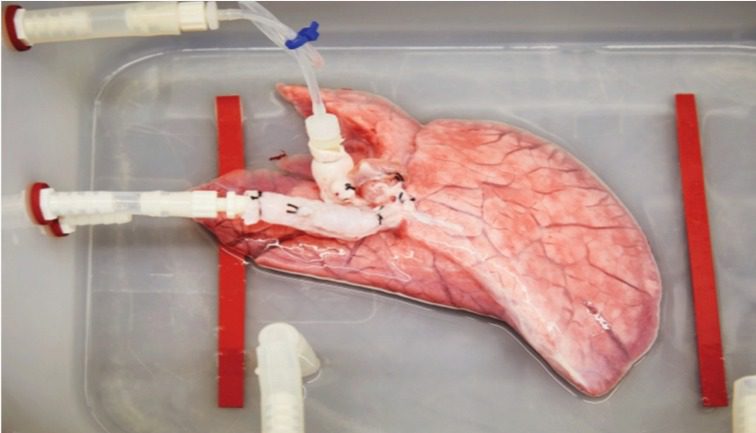
Despite this, this discovery has made it possible in the future not only to transplant a lung, but also to grow one for each patient.
Heart Beyond the Glass
This is not the first time a team of biological engineers at the University of Michigan has succeeded in growing heart muscle tissue from SC.
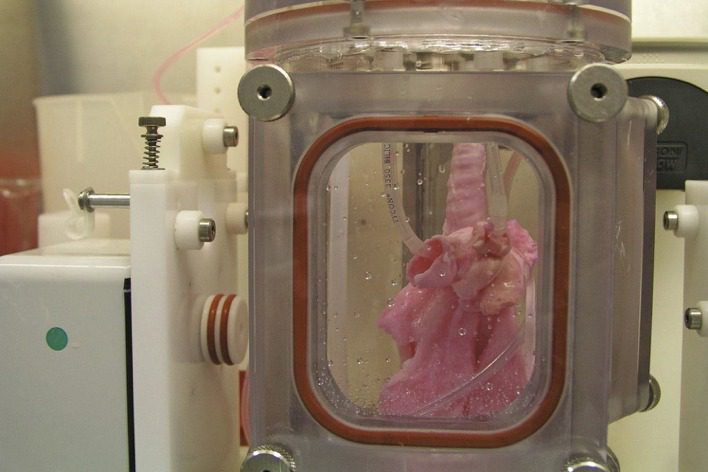
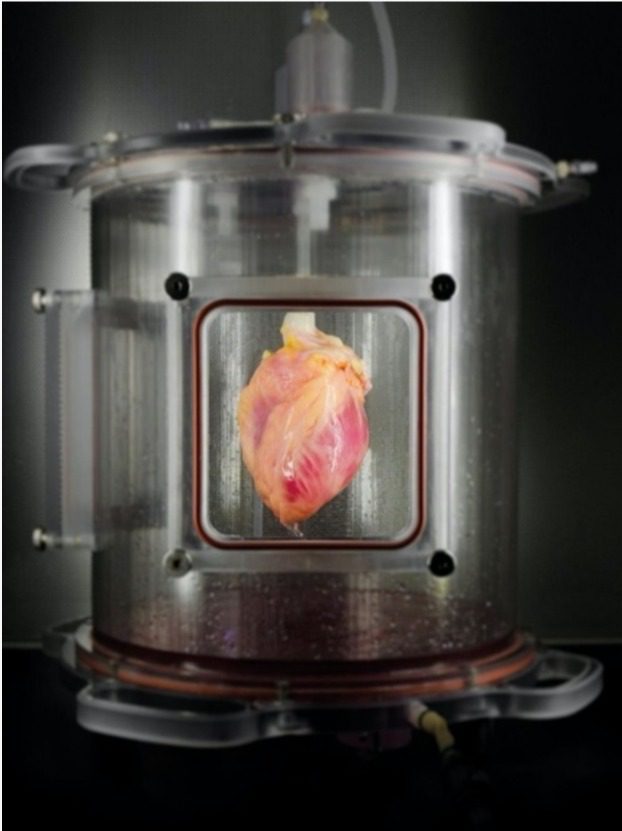
For now, such a heart is not a complete heart. As the bioengineers themselves state, growing a functional human heart is now a matter of time.
Real Bones for Transplantation.
Israel. Bonus Bio Group, a biotech company, was able to create a bone skeleton. Such a gel framework was created for subsequent “repopulation” with stem cells.
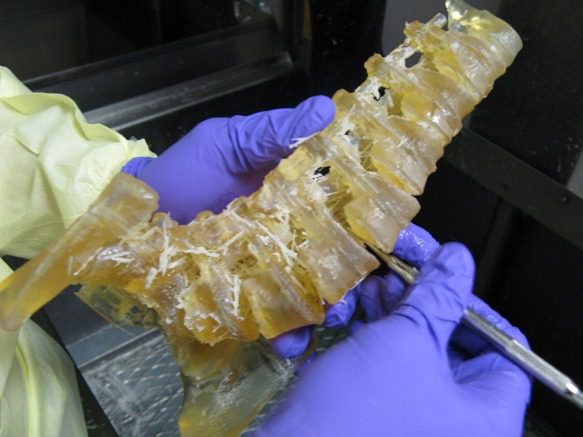
Bones grown using cellular medicine have been successfully transplanted into a group of rodents. Global work is currently underway to obtain permission to transplant such bones into humans.
Stomach.
Ohio State physician James Wells, along with a team of bioengineers, was able to grow functional gastric tissue. The tissues were grown from embryonic SCs and MSCs that had been reprogrammed.
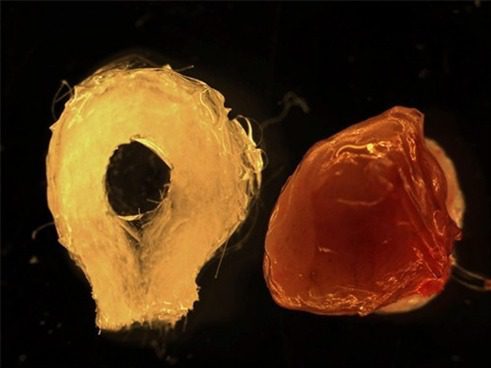
As a result, the cells of the stomach turned out to be fully working – they independently synthesise all the necessary acids and elements for normal digestion.
The Eye in the Cup.
Japanese specialists have managed to grow absolutely all layers of a real human eye in a petri dish. So far it is impossible to transplant the eye completely, but it has become possible to grow the necessary tissues for each specific patient.
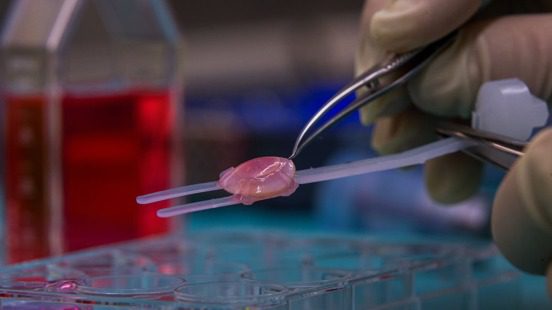
In the future, this may solve the problem of vision loss as well as cancers of the visual organs.
How did the real-world application of stem cells begin?
The largest number of stem cells is located in the embryo. It is from them that not only cells but also all organs and body parts develop during pregnancy.
Similarly, SCs are abundant in cord blood, although in smaller amounts.
In adults, most stem cells are located in the bone marrow. Bone marrow transplantation is currently saving thousands of lives of patients with oncology and especially leukaemia.
How does it work? In simple terms, the treatment takes place in 2 stages. In the first stage, the recipient receives chemotherapy, which partially or completely destroys the abnormal cells. The second stage involves transplantation of the donor’s bone marrow.
The transplanted cells begin to actively divide, renewing the patient’s blood.
Unfortunately, the complicated procedure of finding a suitable donor is currently expensive and time-consuming, which the patient does not have. Therefore, doctors all over the world are looking for an answer to a vital question – what can replace bone marrow transplantation?
Cellular medicine: a question of ethics
One of the easiest and most easily explained answers is – ESCs. That is, embryonic stem cells (those contained in a living embryo). How ethical is it to use such biomaterial to treat seriously ill patients?
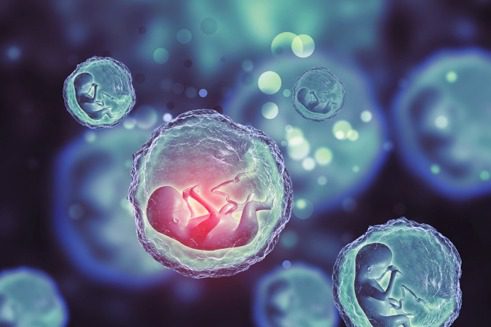
On the one hand, it is ESCs that are the most “working” cells that show the highest efficiency. On the other hand, for example, in countries with Catholicism, a fertilised cell = a living person. Accordingly, it is unacceptable to use it for such purposes.
Also, in 2011, the European Court of Justice imposed a strict ban on the use and patenting of any methodology using ESCs.
Interesting fact! Such a question did not (apparently) arise in Asian countries. Maybe that is why China and South Korea have become leaders in the consumption of cellular drugs.
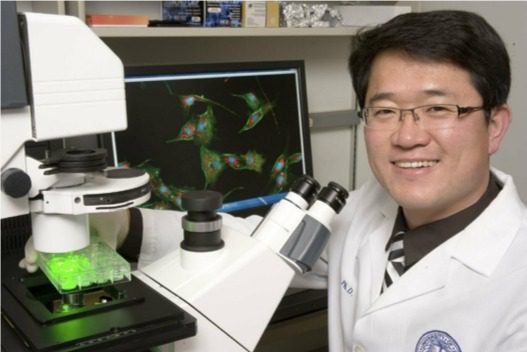
Where does the cellular material for rejuvenation come from?
In order to understand where SCs are taken from for rejuvenation, it is necessary first of all to understand where stem cells are located in an adult person in sufficient quantity. It has been proven that the greatest amount of SCs are found in bone marrow and adipose tissue. The most common cells for treatment are MSCs. MSCs are mesenchymal stem cells. To date, there are 3 main sources for obtaining MSCs:
- Umbilical cord.
The cellular material is obtained from the birth of a baby from the blood of the umbilical cord tissue. This is where large quantities of quality SCs can be obtained easily and ethically.
- Bone marrow and adipose tissue
There are relatively small amounts of MSCs in adipose tissue and bone marrow. The cellular material is obtained by puncture or liposuction under local anaesthesia without harm to the individual.
Unfortunately, the older a person gets, the slower the process of division and reproduction of new cells occurs. There are fewer and fewer stem cells in the body. However, the donor dose of MSCs taken from a person in the form of puncture or liposuction is enough to grow, increase the number and select the most “strong and productive” cells. Such selection as a selective method has a name – scaling. With scaling, the number of reproduced young mesenchymal stem cells can be increased from 20 million to 180 million per therapeutic dose. How the stem cells are taken from the donor is determined by the doctor at the consultation after a complete history is taken. Preliminary consultation is necessary to understand which stem cells are preferable to use in your particular case.
- Метод Шимона Славина
Шимон Славин – мировой авторитет, профессор в области клеточной медицины, иммунологии и онкологии. Его метод является уникальной разработкой, который заключается в мобилизации СК.
Ее суть заключается в том, что для использования стволовых клеток не обязательно брать ткани донора. Достаточно запустить процесс в организме самого пациента. Данный метод в нашей стране пока редко используется.
Regenerative medicine: where is the truth and where is the myth?
Cell therapy: all the truth and myths you’ve longed to know. Ever since stem cells were first discovered, there has been an ongoing debate around cellular medicine.
Sceptics and critics claim that SC is nothing more than a myth and fiction. And is created specifically for profit and to deceive patients. Others believe that cell therapy certainly exists, but its potential is significantly overestimated.
Coolaser Clinic specialists will tell you today the most popular facts and dispel equally popular myths about cellular medicine.
Where does SC come from for rejuvenation?
Cellular material is the body cells from which our body is built immediately after conception. Since SCs are not differentiated, these cells can become any structure or organ in the body.
The largest number of stem cells is located in the embryo before birth. However, the use of such cells raises major ethical hurdles. The most favourable place to obtain them is the umbilical cord – umbilical cord tissue is also rich in stem cells.
In addition, SCs are also contained in the adult. The older a person gets, the less they become. Stem cells are located in the bone marrow. If necessary, they can be safely removed by puncture under local anaesthesia.
How is cellular material produced?
The question of stem cell derivation is still open. After all, the most effective SCs are located in large quantities in a living embryo. To date, a ban on the use and obtaining of human embryonic stem cells has been introduced in most countries of the world.
The easiest and most ethical way to obtain stem cells is lipoaspiration of the patient’s own fat or bone marrow puncture (tissue transplantation). Stem cells are also obtained from the umbilical cord tissue of a newborn baby.
The top 3 organs that have been grown in vitro
- Сердечный клапан
Already, cellular medicine has accomplished the impossible. Swiss scientists from Zurich have learnt how to grow complete heart valves. They can be transplanted to newborns with abnormal development of their own heart valves. The material is stem cells from the embryo’s amniotic fluid.
2. Real human skin.
Zurich, Switzerland. Specialists at the University Children’s Hospital were able to grow real human skin from stem cells. The organ has the necessary blood vessels and is fully ready for transplantation.
This discovery has transformed patient recovery from extensive skin burns.
3. Human liver.
At the same time, successful cultivation of complete organs was announced in Japan and America. So far, livers grown from stem cells are not ready for transplantation. Nevertheless, they are fully functional organs capable of purifying blood.
In addition, more and more medical centres around the world are introducing the use of cellular medicine on a permanent basis. Structures such as cartilage and valves have started to be grown from table cells.
Stem cell injections are already helping to cure tissue necrosis, optic atrophy and many other diseases. By the way, treatment of optic nerve atrophy and tissue necrosis with stem cells is also possible in our clinic.
5 of the most popular myths about cell therapy
- Myth 1. Stem cells cure all diseases.
Perhaps in the future, stem cells will become a kind of panacea for all diseases. Today we are only taking small steps on this path. Stem cells have shown great effectiveness in treating neurodegenerative diseases. This includes Alzheimer’s, Parkinson’s and amyotrophic lateral sclerosis.
Also, SC have shown high efficacy in the treatment of autoimmune diseases (including Crohn’s disease) and diabetes mellitus.
- Myth 2. Stem cells are illegal.
Not all countries in the world have introduced a regulatory framework for the extraction, research and use of SCs. The most religious countries have a complete ban on stem cells.
For example, China and Korea do not have many such restrictions. Maybe that is why these countries are among the leaders of cellular medicine.
До сих пор самой большой проблемой является вопросы этичности использования ЭСК. Так же некоторые бюрократические моменты не позволяют в ряде стран использовать даже зрелые мезенхимальные СК. Это связано с терминологией (обобщаются эмбриональные и зрелые мезенхимальные клетки).
How illegal is it to use cellular material? It depends on the country. In Ukraine today there is no unified regulatory framework and no prohibitions on the use of stem cells.
- Myth 3: Stem cells are dangerous to humans
Все зависит от способа получения СК и опытности врачей. Следует очень внимательно подходить к выбору клинического учреждения. Тщательно подобранные и правильно полученные клетки не несут никакого вреда здоровью.
- Myth 4: Stem cells are all-powerful.
Because the terminology in cellular medicine is not perfect, there is a substitution of concepts in most cases. Have you ever heard that you can grow anything from SCs? It’s true. But only when it comes to embryonic stem cells.
Unfortunately, there are many charlatans who promise anything for profit. In this case, the substitution of concepts misleads patients.
- Myth 5. Cellular material is obtained after abortion.
The internet is rife with rumours about the real origin of the components of some injections or cosmetics. Yes, there is indeed a technology that makes it possible to obtain stem cells from aborted material.
However, the fact that creams and serums are made from abortifacient material on an industrial scale is definitely a myth. The use of real stem cells is almost always individualised for each patient.
- The Stem Cell Bank Myth.
Stem cell banking is not a myth, but a future that is already available to us. Today, there are various stem cell banks. These kinds of banks can be found in almost every country in the world. Their essence is as follows: during childbirth the tissue of the umbilical cord is removed. Stem cells are extracted from it and stored in a bank.
In case of injury, illness or oncology, these cells can be used to treat both the child and the parents. The price of annual storage is relatively low, so it can be arranged by almost everyone.
Лечение клеточным материалом в Киеве
Уже сегодня мы можем Вам предложить 100% эффективное лечение стволовыми клетками в нашей клинике. Более 500 успешных процедур и положительные отзывы наших пациентов говорят сами за себя.
What diseases can we cure with stem cells?
- Systemic lupus erythematosus
- Crohn’s disease
- Rheumatoid arthritis
- Myasthenia gravis
- Cardiosclerosis
- Hypertension
- Retinopathies
- Vasculitis
- Limb ischaemia
- Type 2 diabetes mellitus
- Hyperthyroidism
- Hypothyroidism
- Stroke
- Eczema and psoriasis
We also use stem cells to treat other diseases of the gastrointestinal tract, genitourinary system, immune system, musculoskeletal system and so on.
Summary of the application of cell therapy
Human stem cells are a huge potential for mankind. Despite the current restrictions on changes in the human genome and moral prohibitions, cellular medicine does not stand still. Already now it is possible to treat what was previously considered impossible. With each new discovery, mankind is getting closer to the clue – how to preserve health and youth? How to cure incurable diseases and restore lost body parts?
Stem cells are surrounded by a great veil of mystery and speculation through no fault of doctors. Often cosmetic corporations use this phrase as part of their advertising campaigns to increase sales. However, in reality, nothing of this kind can be in the composition of cosmetic products yet.
Table cells do exist. It is a unique structure whose research will make cell replacement therapy a reality in the future.
Coolaser Clinic in the centre of Kiev on Pechersk is a clinic of aesthetic and cellular medicine. Our best specialists are already carrying out successful stem cell therapy. We have enough experience and real results of stem cell therapy. Schedule a consultation with us today and we will find the perfect treatment option for you.
The most interesting discoveries from the world of cellular medicine especially for you!
Cellular material: the eye in the cup and the ear in the hand – it’s true, but there are myths too, as our top experts tell you.
You can undergo cell therapy of diseases in the clinic Kulazer at the address: Kiev, Pechersk district, Konovaltsa str. 32B.
